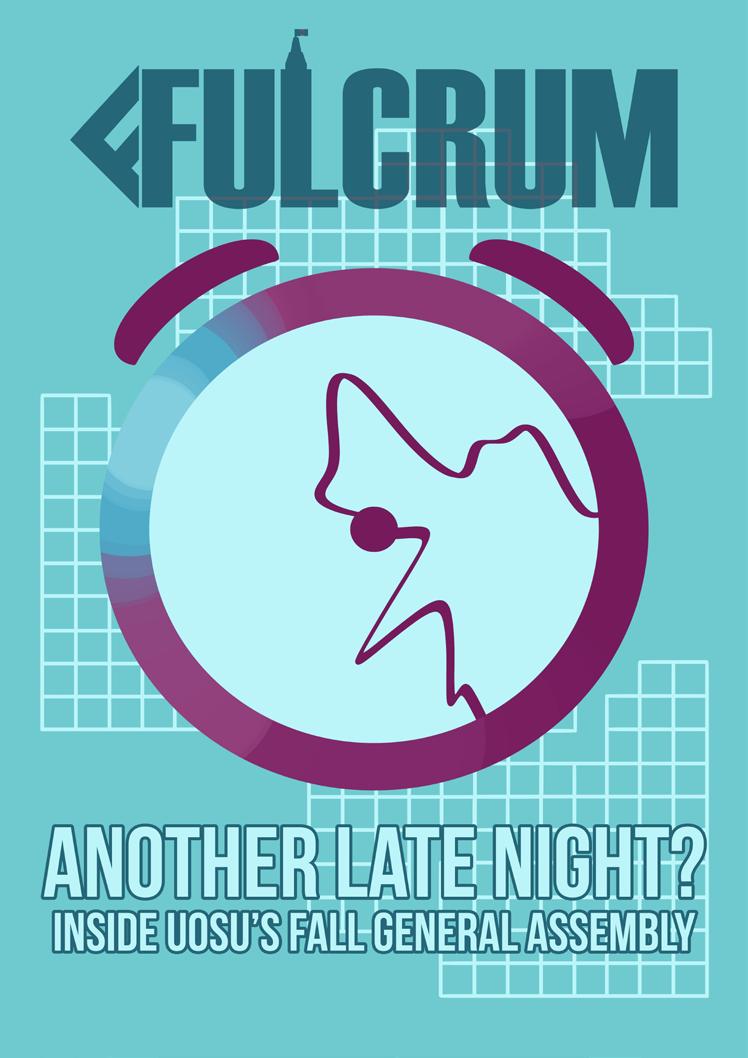
VOLUME 83 ISSUE 5
OPINIONS
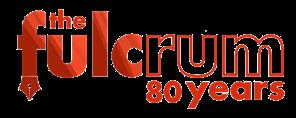




ISSUE 5, NOVember 2022 STAFF Editors-in-Chief Jasmine McKnight Hailey Otten Managing Editor Sanjida Rashid Graphic Designer Kai Holub Photographer Bardia Boomer VIDEOGRAPHER Vacant Social Media Manager Noah Bailey News Editor Desirée Nikfardjam Arts Editor Victoria Drybrough Sports Editor Brandon Adibe ScienceS & Tech Editor Emma Williams Features Editor Bridget Coady Opinions Editor Matthew McConkey Staff Writer Grace Kim-Shin News Associate Yannick Mutombo news (PP. 3) UOSU: Fall General Assembly included speakers being cut off, controversial motions from Max Christie, and the adoption of a sexual violence policy (PP. 4) Canada lifts working hour restrictions for international students (PP. 4) Students face difficulty managing healthcare systems ARTS (PP. 6) University of Ottawa Pride Week: The art of drag (PP. 6) Checking in on the state of U of O student bars SPORTS (PP. 8) A rivalry renewed (PP. 8) Gee-Gees season ends with a bronze medal SCIENCES (PP. 10) Evidence based study strategies: How to survive exams
(PP. 11) We deserve to be characters, not caricatures (PP. 11) Are we still doing EQAO? TheFulcrumFB instafulcrum The Fulcrum The_Fulcrum 2 thefulcrum.ca
UOSU: Fall General Assembly included speakers being cut off, controversial motions from Max Christie, and the adoption of a sexual violence policy
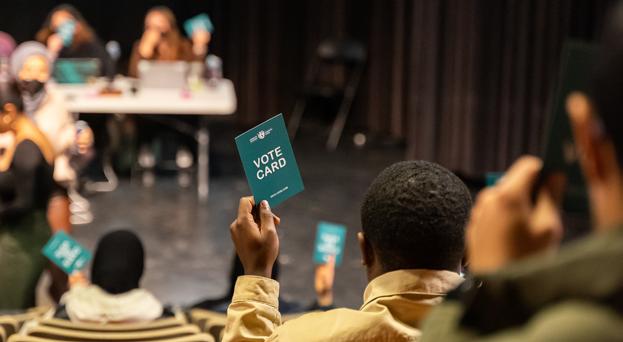
Like last year, members faced difficulties accessing UOSU’s Sharepoint prior to the meeting
The University of Ottawa’s Students’ Union (UOSU) held its fall Gener al Assembly (FGA) on Nov. 26 at 4 p.m.. The meeting, which has been held virtu ally for the past two years due to COVID-19, was of fered in a hybrid format.
The meeting began with a land ac knowledgement from the Indigenous student rep resentative on UOSU’s Board of Directors (BOD) and co-president of the Indigenous Students As sociation, Quanah Traviss. He said that since attend ing BOD meetings, he has always abstained from approving the agenda due to the land acknowledge ment sections.
“I cannot bring
myself to vote yes on an agenda where the scripted land acknowledgement is read as if it’s just another item to check off the list,” he said.
Following land acknowledgements and approval of the agenda, the Executive Committee gave their updates, which was followed by a ques tion period. While UOSU had allotted 30 minutes, the updates and question period lasted almost a full hour.
When voting on constitutional amend ments, members of the FGA voted in favour of a Winter General Assembly, which will be held some time between February and March of next year. Additionally, members voted on three positions: one on pushing for hybrid learning options, one in
support of Iranian stu dents, and one on working against over-policing on and near campus. All three amendments to UOSU’s positions book passed.
The first mo tion on the agenda was the approval of the UOSU by-election results, which included the ratification of Ratisbonne Mukadi Kazadi as equity commissioner and Hannah Wiedrick as a second BOD represen tative from the faculty of arts. Both Mukadi Kazadi and Wiedrick were rati fied, and the appointment of a public accountant, the next motion, was also passed.
The first motion from members included the adoption of a sexual violence policy, brought forward by Alyssa Peyton.
“From the things I’ve witnessed person
ally as a student, from talking to other students, my own experiences, also my volunteer and paid work at the WRC [Wom ens Resource Centre], I’ve noticed the lack of sexual violence policy does pres ent a really big issue for students on campus in terms of safety and access to support and as well the prevention of sexual vio lence,“ said Peyton.
“I think having a policy is really important and I think it’s important to stress that it is survi vor-centred.”
The motion was passed unanimously. Multiple motions which had been added to the agenda were rescind ed during the FGA, includ ing the hiring of a multifaith coordinator — which UOSU is already in the pro cess of doing, and will con
duct interviews over the next few weeks — and the abolishment of the CVUO.
One motion, pre sented by Max Christie, pushed for expanding par ticipation in student poli tics. This motion caused a lot of commotion among attendees.
Shailee Shah, a fourth-year political sci ence student, stated that while she agrees with a motion to ensure partici pation in student politics, there were many issues with the language Christie used in his motion.
“It completely discludes our principles of equity at this university. This is a bilingual universi ty where we have elected representatives represent ing these bilingual stu dents… If you wanted an English-only university, go to Carleton,” said Shah.
Christie’s motion called on UOSU’s election committee to “remove the restriction that all exec utives must … be fully bi lingual above and beyond what the University of Ot tawa considers fluent.”
After countless amendments and divided discourse, the motion did not pass.
Two motions were added, and passed, to add time to the gener al assembly. However, as the meeting progressed, it was clear that the as sembly was getting tired and even a little restless.
Chair of the Board, Paige Holland, began limiting the time people could
THEFULCRUM.CA 3 NEWS
NEWS EDITOR
Desirée Nikfardjam news.editor@thefulcrum.ca
Desirée Nikfardjam
UOSU held their fall General Assembly on Nov. 26. Visual: Bardia Boomer/The Fulcrum.
spend speaking on a mo tion and cutting them off mid-sentence, which was not received well by the members of the assembly.
Kareem Brochu, president of the Telfer Stu dents’ Association and a former UOSU BOD repre sentative, took a moment to acknowledge the short and “disrespectful” ac tions of Holland.
“Throughout the entire meeting, the
chair has been a taunt disrespectful to speakers, in rushing them to finish speaking, or just asking in them in an unkind way to leave the mic. I think that there’s a way to conduct a meeting without having to be disrespectful like that,” said Brochu.
He continued, “a lot of us have chaired meetings before … I un derstand that it can be stressful and tiring, but
everybody here is here for the benefit of others. They’re here to advocate, they’re not here to waste anyone’s time, so I think we should just all give a lit tle bit more respect to the people speaking.”
Holland did not respond, and continued with accepting speakers.
Brought forward as other business by Tra viss, the last motion to be passed at the FGA was
a push for bilingual rights for Indigenous students. The motion, which would alter the constitution to allow Indigenous students who speak a combination of either French or English, and a language Indigenous to Turtle Island, to run for an executive position, was passed unanimously.
With a total of three separate motions to increase the length of the meeting to ensure
Canada lifts working hour restrictions for international students
Canada lifts working hour limit for international students
The Government of Canada announced on Oct. 16, that it will allow international students to work beyond the 20-hourper-week restrictions as of Nov. 15.

The Government has recognized that, with the COVID-19 pandemic, many jobs have been lost and businesses are dealing with staff shortages. The lifting of the working re strictions on international students will allow them to work longer shifts, which many students are looking forward to. They explained the change is temporary, and is supposed to end in 2023.
University of Ot tawa (U of O) students are hopeful the extra hours will help them financially. Tamali Nag, a PhD chem istry student from India, explained why she would be taking advantage of
the working restrictions being lightened. “Being an international student here in uOttawa, it’s kind of tough, especially on funds.”
With the Univer sity’s tuition increase ear lier this year, international students are looking at a per-term tuition fee that, for most programs and faculties, more than qua druples those of Ontario residents. In the faculty of arts, a Canadian student from Ontario is estimated to have a per-term tuition fee of $3,044.08, while an international student would pay $19,346.02.
Nag further ex plained how the Govern ment’s lightened working restrictions are beneficial to her.
“I believe it’s go ing to help me more in the paying of my tuition and loans,” she said. When asked if she felt that lifting the restrictions was going to help other international
students, she said, “It will help them in the long run and keep them saving up for extra higher education, like pursuing grad studies”.
The Fulcrum also met with Yousra Bassoul, a first-year international stu
more money for them selves and can do many things that I can’t do.”
With the restric tion being lifted, there has also been some fear amongst international students about not having
diligence was given to all motions on the agenda, this year’s meeting lasted just shy of seven hours, adjourning at 10:45 p.m. In recent years, the FGA has gone far longer than anticipated times, ending just before midnight last year, and as late as 2 a.m. the year before.
The next UOSU General Assembly will be held in the Winter semes ter.
make time for this,” said Bassoul.
The increase in available work hours for international students al lows them to pay for tu ition fees, groceries, and everyday life items. While
dent from Morocco study ing biomedical mechanical engineering. “When I see my Canadian friends, I see that they can work more than 20 hours, they have
Students face difficulty managing healthcare systems
enough time to dedicate to their studies.
“From my own point of view, you have enough time for anything you want, you just have to
some students have ex pressed they may get be hind in their studies, many international students are happy about the increased working hours.
As pediatric hospitals fill up and ER wait times persist, everyone is struggling to find access to medical professionals
With health departments across the country struggling to care
for patients within their capacity, and public health agencies declaring an un expected flu epidemic, students at the University of Ottawa (U of O) have
been especially struggling to find medical attention.
Pediatric hos pitals have been notably overwhelmed, with insti tutions such as SickKids
reporting that their ER wait times are reaching up to 12 hours. Some hospi tals in Ottawa have even resorted to using ‘uncon ventional spaces’ to treat
patients in October.
With fewer and fewer doctors in the city accepting new patients, students have to use their own means to find medi
4 THEFULCRUM.CA
Caroline Kirkey
Amira Benjamin
International students now permitted to work more hours. Image: Cottonbro Studio/Pexels.
cal advice and solutions.
Mackenzie Snel grove, a fourth-year in human kinetics, was one such student. She was suffering from pneumonia earlier this month, and struggled to find a doctor to talk to or even a walk-in clinic to attend for antibi otics.
“I called may be six or seven clinics that are advertised to be walk-in clinics, and appar ently over COVID, they shut down the ‘walk-in’ part and were only fam ily doctors, I guess? And they weren’t accepting new patients and so they wouldn’t see me,” she re counted.
Although Snel grove was able to get in contact with one walk-in clinic, she said that they were strict with setting up an appointment.
“You had to show up at 1 p.m., which made it very difficult with my classes, so I ended up not being able to go there. And I ended up calling my family doctor from back home [in Richmond Hill] to get my antibiotics.”
A view into hospitals
Maya Revesz is a fourth-year nursing student undergoing two different types of clinicals this semester: ‘complex’ care at the Ottawa Hospi tal in oncology, and com munity care with chemo therapy patients.
They say that although they’re a bed side nurse at the hospital, which means their pa tients have been assigned, they’ve noticed a wide spread shortage of health care support workers.
“I think there is increased anxiety with my patients, asking when the doctor is coming to see them and trying to plan
out when they can see the doctor and what they’re going to talk about,” they said. “And the problem with that is, since the doc tors take on so many pa tients during the day, you can’t give your patients a specific time.”
Revesz’s unit at the hospital is currently on a COVID outbreak for the past two weeks, which has added challenges to their assigned workload.
“Like, I know a few shifts ago, I had three patients all requiring glu cose checks throughout the day, and the glucose scanner that we have to measure, you need to get an ID badge to turn it on. The problem with [this], since we’re on outbreak, is that you’re putting on your gown, you’re putting on your gloves, you’re put ting on your face shield, and you’re going into a patient’s room — and your glucose scanner times out,” they explained.
“And so I would
have to go back [to] find my primary nurse and get their ID badge again. So taking off all the PPE, go ing back into the room… I found myself running around a lot endlessly for small tasks that should be better organized.”
Are campuses masking up?
A CBC article re ports that Ottawa univer sities — including the U of O — are following Ottawa Public Health guidelines and are not reinstating mask mandates. This counteracts ‘strong’ rec ommendations from Dr. Kieran Moore, Ontario’s Chief Medical Officer, to mask up indoors again.
Some univer sities have been taking preventative steps. The University of Waterloo re instated its indoor mask mandate on Nov. 9, ap pearing to be the first in the province to do so. Meanwhile, post-secondary institu
tions like the U of O have dropped vaccination and mask mandates, leaving certain groups of students, such as immunocompro mised and students with disabilities, on their own.
Snelgrove says that she would like to see more advertised flu shot clinics on campus, and possibly even social dis tancing measures.
“All of my class es are in Desmarais, so they’re tiny classrooms, but the classes are packed. Everyone is sitting beside each other,” she said. “I’ve been sick twice this month and I haven’t been able to fully recover. And I’m not out doing crazy things — I’ve just been going to classes.”
Snelgrove says that in addition to receiv ing her antibiotics, she’s been wearing masks ev erywhere and taking vi tamins as a preventative measure.
Revesz says that not a lot of people in the
University community un derstand the stress many nursing students face in regards to not getting sick while attending their clini cals.
“We have clin icals going every single week, and if you miss more than two shifts, they threaten to have you redo your semester, depending if you can’t make up those hours,” they said. “If I get sick, I’m putting my degree on the line, and I’m putting my, like, just my financial stability on the line. So, I think masking is a lot more important than people re alize.”
As the weather grows colder and the se mester comes to a close, it’s important to take care of your health — and con sider our healthcare sys tems.

THEFULCRUM.CA 5
Students are finding it difficult to receive medical attention. Image: Sasun Bughdaryan/Unsplash.
ARTS
University of Ottawa Pride Week: The art of drag

Exploring gender through drag
The University of Ottawa and student associations on campus celebrated Pride Week last week from Nov. 14 to Nov. 20, with activities aimed to increase the visibility of the LGBTQ2A+ commu nity. With drag shows in between sports games, workshops on pronouns and drag makeup, and fun nights of trivia and karaoke, the University showed its solidarity with the LGBTQ2A+ communi ty.
Drag shows shined throughout the U of O’s Pride Week. They made their appearance throughout the Gees’ sports games, at the Look out Bar in the ByWard Market, and at SAW Gal lery. These unique perfor mances celebrate gender fluidity and the LGBTQ2A+ community.
Although drag shows have recently be come popularized on cam puses and within main stream culture, the art of drag has always existed.
Historically, drag made its mark in Shakespear ean theatre performances all the way to vaudeville shows.
Drag shows are often defined by drag queens and kings dressing in dramatic colours, make up, and clothing. Their performances are usually a mixture of dance and lip-syncing to music. These shows are highly enter taining while acting as a form of self-expression for performers. They explore the limits of gender by ex aggerating gender norms through appearances.
By exploring gendered appearances, drag plays an important political function in ques tioning the gender binary. Oftentimes, drag queens and kings will break down our barriers with humour, allowing us to relax our hard adherence to tra ditional masculine and feminine representations. Drag shows celebrate the LGBTQ2A+ community as they imply that gender should be an expression of freedom, rather than of social restriction.
Drag is a multi disciplinary art form that brings together elements of theatre, music, fash ion, dance, and makeup. As drag queens and kings search for the best ways to please the audience, they introspect and, at times, they emerge with egos or alter-egos, exposing au diences to different gen dered perspectives.
For Claire Park, an executive member of the U of O Pride Club, drag performances are a “fun
ARTS EDITOR
Victoria Drybrough arts@thefulcrum.ca
way and such an interest ing way to play with gen der and expression.”
They reference Judith Butler’s notion of gender performativity, where gender is construct ed through a series of re peated gendered actions. Park relates this theory to drag performances, stat ing that “it’s very inter esting to see such a literal take on performing gender [in drag shows], because even if we’re not aware of it, we’re always perform
ing.”
Drag breaks down the barriers of strict binaries, gender roles, and norms. Through exagger ation, drag demands the viewer to reflect on the significance of our hard ened notions of femininity and masculinity. The ex traordinary performanc es put on by drag queens and kings make us realize that perhaps, as said by RuPaul Charles, “we’re all born naked and the rest is drag.”
Checking in on the state of U of O student bars
Students have been left with little
It’s no secret the COVID-19 pandemic forced many businesses to close their doors. The University of Ottawa bar scene is no exception. While some bars had to close down entirely, others are waiting for their
alternatives and a freezing winter walk
revival. However, in some cases, it seems there’s very little hope that this will happen. A recent Red dit post from a U of O grad laments the sudden lack of student bars, where there used to be a variety of op tions.
In present-day 2022, if a student wanted to grab a drink after class,
the options are quite lim ited. The corners opposite campus along King Edward Avenue are home to Fa ther and Sons, the Univer sity Bar and Grill, and No Forks Given. Regardless, with over 40,000 in-per son students, winning the Hunger Games seems eas ier than securing a table during peak hours.
Back in the day, the career space in the University Centre used to be 1848, a student bar where students could grab a pint in between classes. Imagine walking out of a dreadful, three-hour lec ture and meeting some friends right next door — the dream! With $2 drinks on Tuesdays, Karaoke
nights, and live music right in the heart of campus, 1848 was a prime spot to enjoy an afternoon.
Alas, as written in a 2016 article by the Ful crum, the former Student Federation of the Uni versity of Ottawa (SFUO) released information re garding how costly these student bars can be. Hav
6
thefulcrum.ca
Mariana Gomez
Grace Kim-Shin
Photo: Greta Hoffman/Pexels.
ing 1848’s last Instagram post in 2019 and their Facebook page erased completely, 1848 has un fortunately served its last tap.
Another popular bar that has yet to reopen is Nostalgica Pub and Beer Garden. Located at 601 Cumberland, its colourful lights, 27 beer taps and live events once made this bar a sensation. Nevertheless, the once-popular student bar is eerily quiet. Nos talgica was known for its café scene in the daytime and lively events at night. Vegan options, elaborate dishes, and great drinks at an affordable price — as well as discounts for grad uate students — made this
place a U of O staple. Nostalgica re mains closed, but hope for a reopening is not en tirely lost. It still carries its domain, keeps up a semi-active social media presence, has an active phone number, and is still featured on the Universi ty’s official website.
Legend has it, pre-pandemic, Minto Sports Complex had a pub inside! Imagine how fun it would be to go watch a hockey game and talk about it afterward over a pint. Unfortunately for newer students, the pan demic took a toll on a number of social places in the University. With its last Instagram post being from
well over 6 years ago, and the website domain being on sale, it seems unlikely like Gee-Gees will be get ting The Draft Pub back anytime soon. Our last nostalgic
spot is the Royal Oak, once located on Laurier street.
dear to its students. Father and Sons is one popular
This quintessential English pub was the perfect spot for a night out. Its typical bar meals combined with traditional English food made for a great spot to grab a drink and destress. Although the nearby spot is closed, The Royal Oak has many other locations around Ottawa and Whit by.

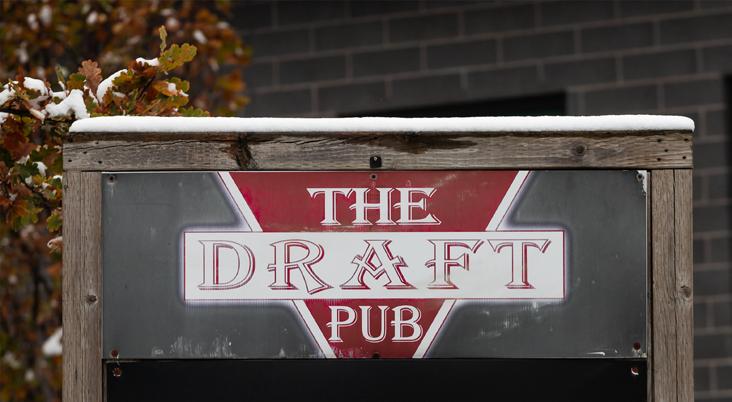
Nonetheless, the U of O has a few great lo cations that are near and
choice — whether it’s for a cheap hungover breakfast or Wednesday night Kara oke. One very underrated spot near the U of O is the University Bar and Grill on 196 Somerset St E, which offers affordable food and drinks and has a very cozy vibe, making this spot ide al for any students looking for a good time.
THEFULCRUM.CA 7
Image: Bardia Boomer/Fulcrum.
The Fulcrum is hiring a Videographer To apply, visit www.thefulcrum.ca/were-hiring or email the Editors-in-Chief at editor@thefulcrum.ca
No Forks Given is a new restaurant at 191 Rue Somerset St. E. Bardia Boomer/Fulcrum.
A rivalry renewed
Gees fall 2-1 in their third matchup against Carleton this season
On Thursday evening, the Gee-Gees women’s hockey team took a trip down Colonel By to face the Carleton Ravens. This was the third regular-season meeting between the two hockey teams this season. The Gees had won the previ ous two games 4-1 and 3-1, respectively.
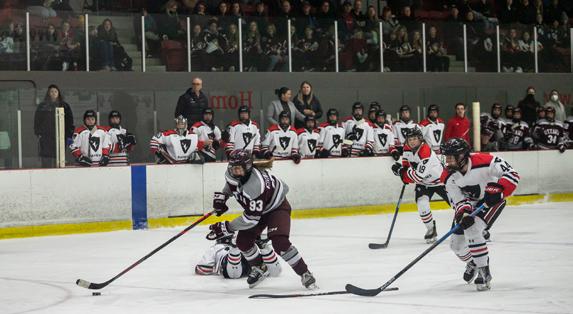
This time around, the Ravens looked to take the game to the first-place team in the Réseau du Sport Etudiant du Québec division (RSEQ).
The first half of the first period was all Gee-Gees putting shots on net and hemming the Ra vens in their own zone for long periods of time.
On the Gees’ first man advantage of the game, they came close to finding the opener when Reece Mepham fired a shot off the post before the powerplay expired. This was a sign of things to come for the Gees power play, which has improved in recent games. The Gees created chances, but were unlucky when it came to taking them.
Although the first half of the period was all Gee-Gees, the second half was a bit more bal anced. With only a few minutes remaining, goalie Mahika Sarrazin went to work. Sarrazin made a se ries of saves after a partial break-away, then a wraparound and a shot from the slot, which she turned away with the blocker.
Even with the Gees outshooting the Ra vens, it was actually Car leton that would go into
the break with the better scoring opportunities.
The Ravens kept up the quality scoring chances trend when they opened up the scoring 53 seconds into the second frame. The Ravens got on the board when a point shot was saved, but the rebound was turned in.
Carleton would double their lead on a shot from the half boards when Sarrazin was screened, and she had no chance.
The third peri
Gee-Gees season ends with a bronze medal
THE GEE-GEES BRING BACK A MEDAL FROM QUÉBEC CITY
After a hardfought season, the Gees successfully defeated the Cape Breton Capers to win a bronze medal at the 2022 U Sports Women’s Soccer National Champi onships.
Unfortunately, the Gees were not able to play for the gold, as
they lost on penalties to the eventual champions, the Montréal Carabins, who beat hosts, the Laval Rouge et Or. So, the argu ment can be made that the Gees were, in fact, the second-best team in this competition.
But enough about semantics — let’s look at how the team got to their bronze medal game.
The Gee-Gees came in ranked third. That means their first match of the tournament was against the sixth-ranked Trinity Western in this eight-team tournament. Trinity Western, out of Langley, British Columbia, finished runners-up in Canada West to the num ber one ranked team in the nation, the University of British Columbia, so it
od proved hopeful for the Gees when they momen tarily had a five-on-three powerplay. The result of the powerplay was anoth er shot off the post, this time from forward Sophie Gareau.
The Carleton keeper was standing on her head, saving thirty of the Gees’ shots late in the third period.
To generate some more offence, the Gees pulled their goalie early, with 2:42 left on the
clock.
The gamble would pay off as the thir ty-first shot by the U of O was tipped in from a point shot by Viki Harkness.
The Gees would break up the shutout, but that’s as close as they would get to making a comeback. The Ravens took home the two points, winning 2-1.
was expected to be a good matchup for the Gees. The match was tightly contested, but at the 79 minute mark, Sou maya Bouak assisted Cas sandra Provost, who fin ished in the bottom right corner from a low strike with her left foot. This would hold up as the win ner. This meant the Gees would face the Carabins or the Dinos of Calgary Uni
versity — it proved to be the former.
The Carabins won their match after scoring early from Mégane Sauvé, one of the best uni versity players in the coun try. They defended the lead valiantly to see out the game.
The semi-final matchup between the Car abins and the Gee-Gees proved to be the match of
thefulcrum.ca
8
SPORTS
Brandon Adibe
SPORTS EDITOR
Brandon Adibe sports@thefulcrum.ca
Brandon Adibe
The first half of the first period was all Gee-Gees. Image: Bardia Boomer/Fulcrum.
the tournament — a battle of tactical identities and team philosophies, one could say. Montréal’s phi losophy is to play simple and efficient. Meanwhile, we know the University of Ottawa can be skillful and dynamic in their style of play.
On a surprising note, Montréal resort ed to an old tactic that is a lost art in the modern game of soccer: the use of a sweeper. A sweeper is a defender that drops far behind the rest of the
last defender when all else fails.
Montréal’s tactic didn’t seem to work early, though, as Angelina Gen dreau combined with Pro vost to open the scoring.
In the second half, it was Montréal’s turn to turn on the style when Sauvé thrashed an auda cious effort from outside the box, and it swerved into the near post with such power that Cassidy Joslin had no chance to block it.
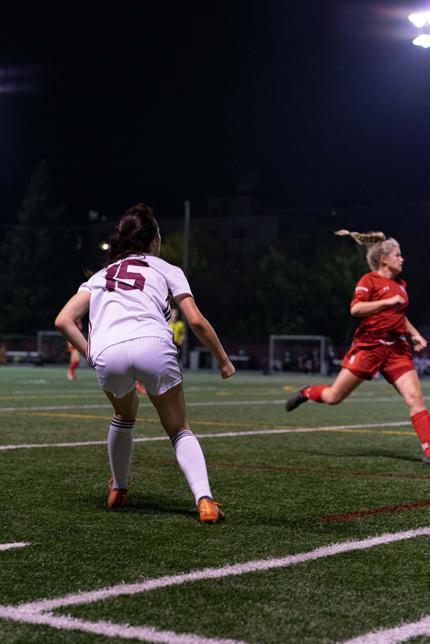
The sweeper
trouble for the Gees throughout the game. However, eight minutes af ter Montréal equalized, a flash of brilliance occurred when Olivia Allen used her pace and finesse to drib ble through six Carabin de fenders, and was brought down for a penalty which she promptly converted. Unfortunately for the Gees, that would not stand as the win ner. An awkward bounce that eluded the usually sure-handed Joslin found its way into the back of the
tion, as the match would proceed into extra time and, subsequently, penal ties.
Montréal won the coin toss and elect ed to shoot first, which is a statistical advantage in soccer when it comes time for penalty kicks, so it was not looking good for the Gees, who were still a bit shaken from conceding earlier on.
Montréal keeper Catherine Langelier had the penalty shootout keep ers dream of, saving three of the Gee-Gees kicks. Joslin managed to make a brilliant save of her own, but it was not enough, and the Gees’ hopes of playing for a U Sports gold were dissolved.
Although the Gees went out in heart breaking fashion, they still had a medal to play for. The amount of mental for titude it took for the team to get back up after such a tough outcome was com mendable.
In the bronze medal match, the U of O took on the Cape Bret on Capers, who lost their semi-final against the hosts, the Rouge et Or.
Early in the match, it seemed like the Gees’ fortunes went from bad to worse as Provost was through on goal but ended up colliding with the keeper and landing hard on her shoulder. There was a long pause in the match, and you could see that Provost was in a great deal of pain when the team’s athletic thera pists checked on her.
Provost returned to the field of play still fa vouring her left shoulder. It seemed like she was trying to help the team se cure the medal at any cost, even if it meant playing through significant pain.
vost, who finished in close. When Bouak went to cele brate with the goalscorer, though, it appeared that Provost actually was tell ing her teammates not to embrace her as it may fur ther aggravate her injury.
It just goes to show how physically de manding it is to play three matches in only a four-day time frame, when you usually need three to four days to fully recover from playing 90 minutes of soc cer. It speaks to her char acter and sacrifice for her teammates.
The Gees would see out the match and receive their well-earned medal. The whole team was very deserving of their final place at Nationals, and the squad should be really proud of what they have achieved as a whole this season.
Playing on the largest stage calls for your best players to rise to the occasion, and throughout the weekend, that was evident from players like Cassandra Provost, Olivia Allen, Trinity Esprit, Kat De lev, Kayla Kyle, and Maya Smith. However, through out the tournament, there was one constant spark in the midfield with her cre ative intelligence, and that was Soumaya Bouak.
Bouak was named joint player of the game in the match against the Carabins.
Monday evening, the team announced that Kayla Kyle, Kat Delev and Cassandra Provost were named U SPORTS Champi onship All-Stars.
defensive to ‘sweep’ up through balls and be the
strategy and Montréal’s defence as a whole caused
net. This equalizer would be the last goal in regula
Before the half time interval, Soumaya Bouak went on one of her skillful runs, which rival teams became used to seeing in this tournament and squared it into Pro
THEFULCRUM.CA 9
Photo: Stefane Kemilev/Fulcrum.
SCIENCES
Evidence based study strategies: How to survive exams
WHAT I TALK ABOUT WHEN I TALK ABOUT STUDYING
Let’s get this out of the way quickly — it’s likely you’re not studying as effectively as you could be, according to science. If you happen to use strate gies like rereading, high lighting, and summarizing or writing notes, that’s probably why.

Rereading was recorded as one of the most frequently used tech niques, followed closely by highlighting and rewrit ing notes/summarizing, and I’d be lying if I didn’t admit I used those strat egies in high school and even into my first year at university. However, what I didn’t know then was that all three were ranked as having a relatively low utility, according to a 2013 review.
Although some research has shown posi tive effects of rereading on answering problem-solv ing essay questions and short-answer application or inference questions, other studies using appli cation or inference-based questions have report ed effects only for high er-ability students, or no effects at all.
In my opinion, I’ve found rewriting notes to be largely a waste of time, especially the ones I put an emphasis on mak ing “look pretty.” However, I won’t tell you what to do, only what the research has found — which is that active recall is the most ef fective revision strategy.
What is active recall and why does it work?
Active recall is a strategy that the involves retrieval of information from your brain rather
than previous strategies that seem to be focused on putting information into your brain. As it turns out, through decades of research, we learn far bet ter by actively trying to re call material.
The same review study found that active recall or practice testing has a high utility, and the effects have been demon strated across an impres sive range of practice-test formats, kinds of materi al, learner ages, outcome measures, and retention intervals. In addition, re searchers recommend that every student should be trying to implement practice testing into their routines if they haven’t al ready.
If you aren’t con vinced though, here are some studies done over the last 50 years.
In a 1939 study, which had two groups of students learn a specif ic topic and, after, tested them on the material ei ther a week or day later. Half of the students stud ied the material as they normally would, and the other half also studied the material as normal and were given practice tests at the end of their session.
The study found that the students who took the practice showed improved performance in grades by 10 to 15 per cent.
Another study from 2010 similarly took two groups of students and had them study ma terial either by using prac tice tests at the end of their session or by using methods they preferred, like rereading and high lighting. The groups were then tested based on facts in addition to concepts.
The group who didn’t use
a practice test to reinforce their learning scored, on average, between 30 and 40 per cent. The group who did use a practice test performed significantly better on the final — some saw an increase of as much as 30 per cent.
One last point to be made comes from a 2011 study, which split students into four groups and asked them to learn material and tested them a week later. The first group was asked to study the chapter once, the sec ond studied the chapter four times, the third group read the text once and then made a mind map, and the last group read the text once and tried to recall as much of the chap ter as they possibly could.
They found that the first group performed the worst, and most in terestingly, the active re call group performed far better than the group that read the text four times — what this tells students is that practice testing our selves once is likely more effective than rereading the chapter four times ever will be.
This study had another component where they asked students to predict which group would perform the best, or to predict the results of the study. 80 per cent of stu dents thought the group which repeatedly reread the material (group two) would score the highest, and rated the active recall group as being the least effective/scoring the low est on the test. This sheds some light onto our own assumptions about study techniques, and whether they match up with what’s been shown in research.
SCIENCES & TECH EDITOR
Emma Williams science@thefulcrum.ca
How to incorporate it into your study routine?
I would recom mend using flashcards to practice retrieving infor mation from your brain, and to ultimately quiz yourself on the material. Some popular digital flash card apps include Quizlet and Anki. As you progress through the semester, you might have questions come up in lectures or you might find a key concepts slide that’s listed at the be ginning of lectures, which can help guide your flash card questions. If your course uses a textbook, there are likely questions at the back of the textbook you could use to quiz your self, as well.
If you can’t shake the habit of making notes, try doing so with the book closed rather than directly copying from your text book or lecture slides. Af ter you’ve reviewed the topic, close your book and try to recall or remember and write as much infor mation as you can on a blank page. Afterwards, reopen your book or slides and check which parts you may have missed. Repeat this process until there ar en’t any gaps left.
Another option would be to consider the Feynman technique, named after Nobel Prize in physics winner, Rich ard Feynman. In addition to furthering science, he was also an incredibly ef fective teacher, according to former Microsoft CEO Bill Gates. This technique was named after him be cause of his unique ability to explain complex ideas in a simple and digestible manner. The crux of this technique relies on the idea that the only way to understand all the details
of a concept is to explain it to someone else.
For the precise steps, you can find more information here.
It should go without saying that a great active recall method is practice testing. If you find yourself in a math, phys ics, or chemistry course, your best option is to stop making summary sheets or rereading slides, and instead work through as many practice problems as you possibly can. Use the textbook questions or questions posted by your professor. Closer to exams, try to find practice mid terms to work through as a bonus — you can set a timer for an hour and 20 minutes to practice work ing under time constraints.
For more infor mation on effective study strategies, I would watch a lecture given by Marty Lobdell titled, “Study Less Study Smart.” To name a few tips, Lobdell advis es students to study in groups, avoid cramming, and also stressed the im portance of sleep for longterm learning and reten tion.
10
thefulcrum.ca
Emma Williams
Effective study strategies. Image: Green Chameleon/Unsplash.
OPINIONS
We deserve to be characters, not caricatures
HUMANIZING ASIAN PEOPLE ON SCREEN
“For as long as I can remember, I have struggled to prove my self into existence,” writes Cathy Park Hong in Minor Feelings, an es say collection about the Asian-American experi ence.
It’s a sentiment echoed by Asian immi grants all over North America. They have to prove their right to exist here. They work excep tionally hard to gain minor recognition. But, like Hong says, they are shamed for having “minor feelings.”
For her, these minor feel ings are the disregarded and invalidated experi ences of marginalization minorities face in Western society.
Asian people have to prove themselves into existence not only in the workplace and in so cial spaces, but also on the big screen. Historically, Asian people portrayed in the media have been su perficial caricatures forced into stereotypical roles. Whether it’s the martial artist or the minority mod el, subjecting Asian peo ple to characters that lack depth limits our human ity and renders us mere entertainment. It ignores
the fact that Asian people have lived in North Ameri ca for generations and the unique stories they have which deserve to be rep resented on screen.
Recent films like
inner workings of both my home and my mind. When I recognized this, I felt both accepted and understood by Western media. I felt as though my experiences were finally normal, and
malize the existence of first- and second-gener ation immigrant families and they will show the diversity of our struggles. They will humanize Asian people and allow us to feel
cal roles imposed on us.
In a famous in terview, James Baldwin tells us, “you think your pain and your heartbreak are unprecedented in the history of the world, but
Minari and Everything Ev erywhere All at Once have made strides in Asian rep resentation. Both films ex plore the divisions and res olutions between Western life and Asian values with their own nuance.
I remember relating to Joy Wang in Everything Everywhere — she had a hardened stubbornness and strug gled to relate to her moth er. The film reflected the
Are we still doing EQAO?
that the unique challenges faced by Asian-American children deserved to be represented on screen.

To reflect real representation, mov ies must show that the Asian-American isn’t sim ply a divisive identity, but one that is cohesive. They must preach that our im migration story is not just a cycle of conflict, but a story of resolution. By doing this, they will nor
QUESTIONING THE EFFICACY OF STANDARDIZED TESTING IN ONTARIO
You know the feeling. You’re both ex
hausted and overwhelmed following a late-night study session. You can’t think about your evalua tion without being over
come by a mix of dread and nervousness. It’s exam time.
While test-taking is stressful for many stu
validated in our cultural conflicts and plurality.
Asian children in North America must see themselves represent ed on screen to grow up with confidence. Many second-generation Asian immigrants struggle to un derstand where they fit in North American society. Film has the power to alter this by telling our stories and affirming our indepen dence from the stereotypi
then you read.” Today, film provides the consolation that books once did, and we turn to film to remem ber that we aren’t alone in our hardships. Film is a form of art that is always political, and only when people of colour are hu manized on screen will the medium get closer to representing our collective humanity.
dents, there is one thing that’s worse: taking a test so that teachers can be evaluated — not students. Among Ontario elementa
ry and secondary school students, such a test hap pens in Grades 3, 6 and 9. These standardized tests are called EQAO.
THEFULCRUM.CA 11
OPINIONS EDITOR Matthew McConkey opinions@thefulcrum.ca
Sydney Grenier
Grace Kim-Shin
Image: Kai Holub/Fulcrum.
The acronym stands for Education Quality and Accountabil ity Office; however, the seemingly relentless tests are commonly known by Ontario students as ‘Evil Questions Attacking On tario.’
I maintain that standardized tests are indeed ‘evil’ and don’t promote education ‘qual ity.’ Nevertheless, parents are understandably con cerned following recent EQAO test results. The Globe and Mail report ed sizable drops in Grade 3 and 6 students who met provincial standards in reading, writing, and maths. Notably, just 47 per cent of Grade 6 stu dents met the provincial standards in mathematics
this past year.
Inevitably, two perspectives will emerge from these results. Some may argue that teachers and school systems are crumbling and conse quently failing students. This is a perspective which I oppose. Rather, I believe that standardized tests fail to reflect the quality of education. The goal of examinations should be to test the knowledge of the students. However, these standardized examina tions only test the ability to memorize and regurgi tate information.
In elementary school, I excelled with class assignments but struggled with test-taking. Suppose I was being evaluated on my understanding of essay
structure with two meth ods: a test and a project. Students like myself would ace the project, but fail the test. If an EQAO analyst were to evaluate my test, they would conclude that I cannot structure an essay. However, upon evaluating my project, it would be clear that I can successful ly apply essay structure. There seems to be a disconnect between what students learn and what they are able to re member. Testing, although it measures memorization, fails to capture a complete picture of education. Therefore, with regard to the low EQAO results, a high level of concern seems unwarranted. Ultimately, the only concerning thing re
garding these scores is that standardized testing continues to be imposed on students to evaluate the quality of education in Ontario.
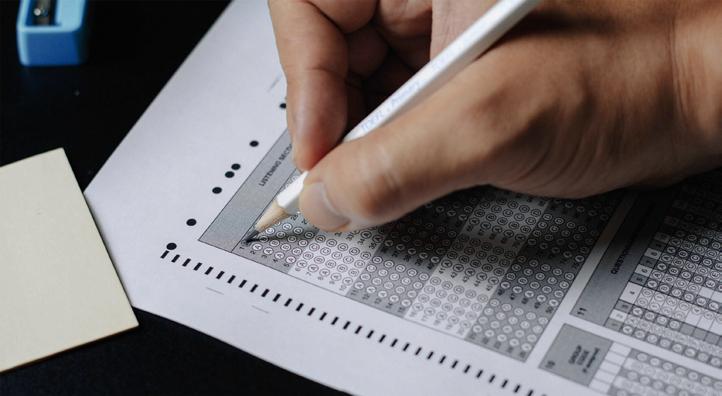
The goal of the EQAO testing is to provide credible results about the quality of the province’s education systems. There fore, the method of eval uation should allow the students to justify their thinking and, as a result, the quality of their educa tion.
I propose an evaluation which focuses on critical thinking as op posed to memorization. Such a project could be available for students to work on throughout the year and submitted at the end of the term. This
project would still incor porate all the skills that are evaluated in current EQAO models, but the topic should be decided by teachers and students.
In addition to be ing student-centred, this method of evaluation will develop critical thinking, research and innovation — crucial skills for this upcoming generation. Of course, these assignments are sure to take more time to create and evaluate. But, if you’re going to put ‘education’ and ‘quality’ together in the title of your organization, you’d better be ready to prepare a quality assessment and spend quality time assess ing it.
12 thefulcrum.ca
Photo: Nguyen Dang Hoang Nhu/Unsplash.
ACKNOWLEDGEMENTS
Treasurer
BOARD OF DIRECTORS
President & Continuity Rep
Kalki Nagaratnam
Vice-President & Staff Rep Brendan Keane
Chair & Community Rep Sam Coulavin
CONTRIBUTORS
The Fulcrum would like to thank
Caroline Kirkey Amira Benjamin Mariana Gomez Stefane Kemilev Sydney Grenier for their contributions to this issue.
EDITORIAL BOARD
EDITORS-IN-CHIEF
Jasmine McKnight
Hailey Otten editor@thefulcrum.ca
MANAGING EDITOR
Sanjida Rashid admin@thefulcrum.ca
GRAPHIC DESIGNER
Kai Holub multimedia@thefulcrum.ca
PHOTOGRAPHER
Bardia Boomer photographer@thefulcrum.ca
Claire Liu
Student Rep Amit Shanbhoug
Fulcrum Alumnus Emma Godmere
Staff Rep Keelan Buck
SOCIAL MEDIA MANAGER
Noah Bailey social@thefulcrum.ca
NEWS EDITOR
Desirée Nikfardjam news.editor@thefulcrum.ca
ARTS EDITOR
Victoria Drybrough arts@thefulcrum.ca
SPORTS EDITOR
Brandon Adibe sports@thefulcrum.ca
SCIENCE & TECH EDITOR
Emma Williams science@thefulcrum.ca
Community Rep Mark Asfar
Student Rep Erik Chin Executive Director Ludvica Boota
FEATURES EDITOR
Bridget Coady features@thefulcrum.ca
OPINIONS EDITOR Matthew McConkey opinions@thefulcrum.ca
STAFF WRITER
Grace Kim-Shin staff.writer@thefulcrum.ca
NEWS ASSOCIATE
Yannick Mutombo associate.news@thefulcrum.ca
THEFULCRUM.CA 13













